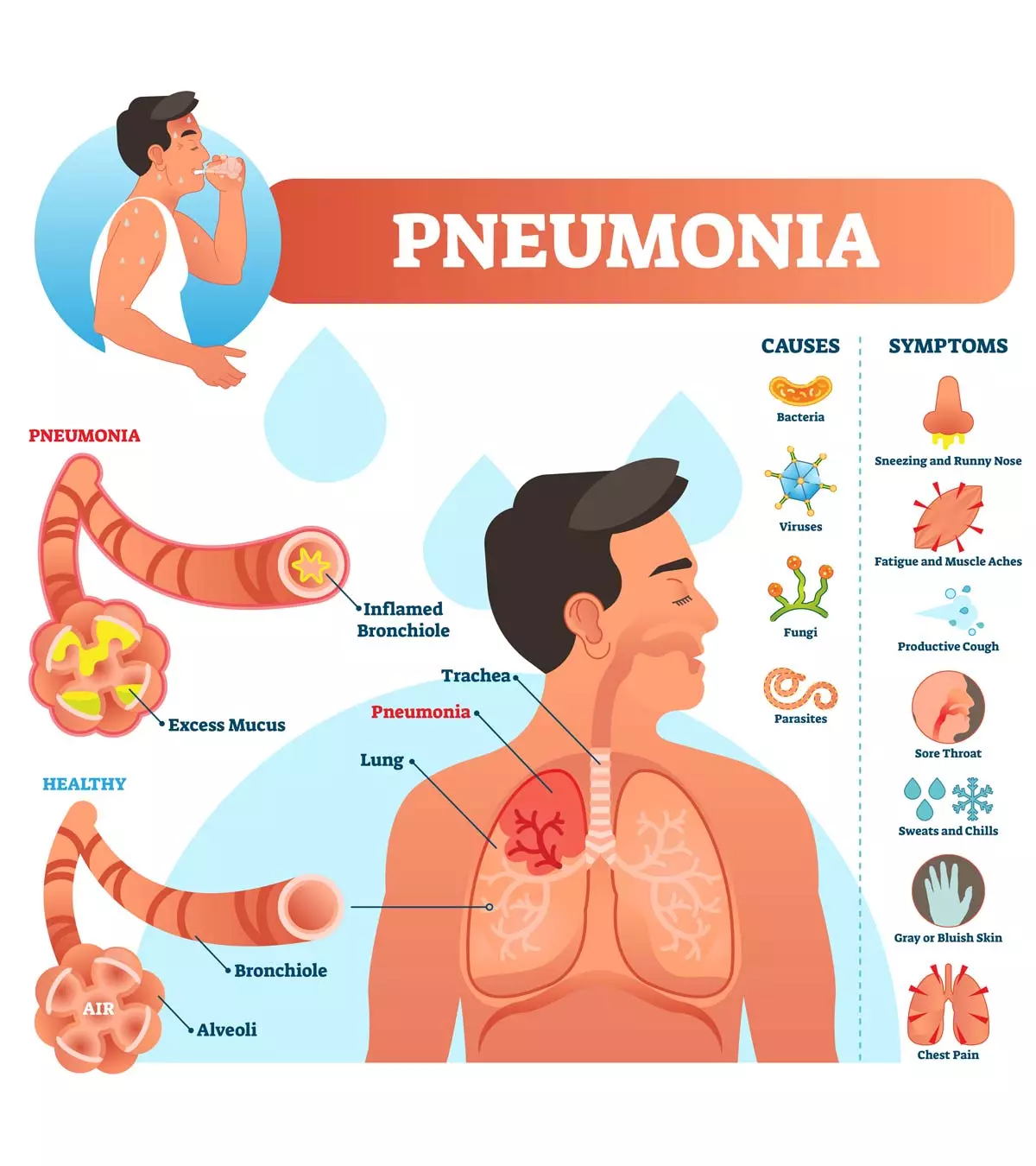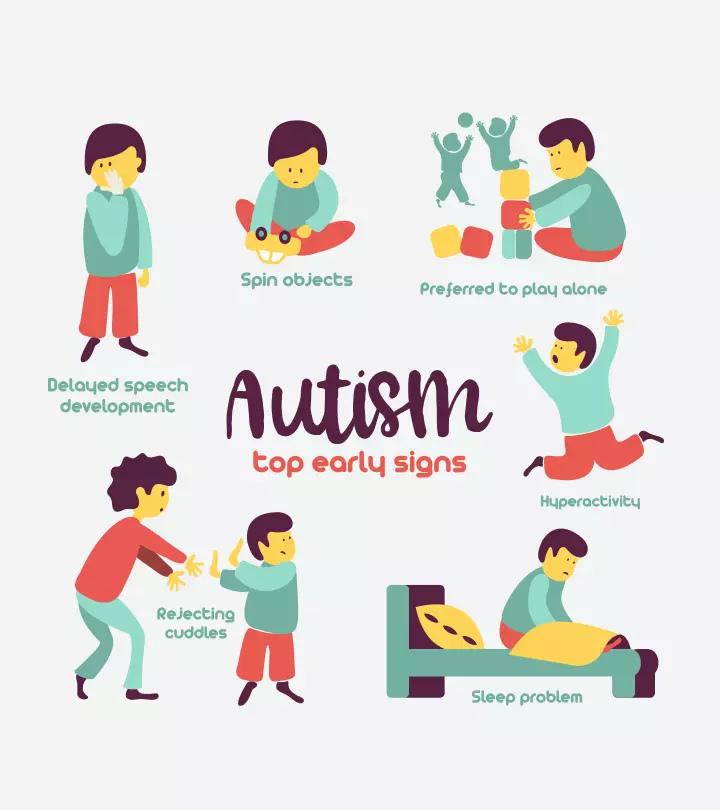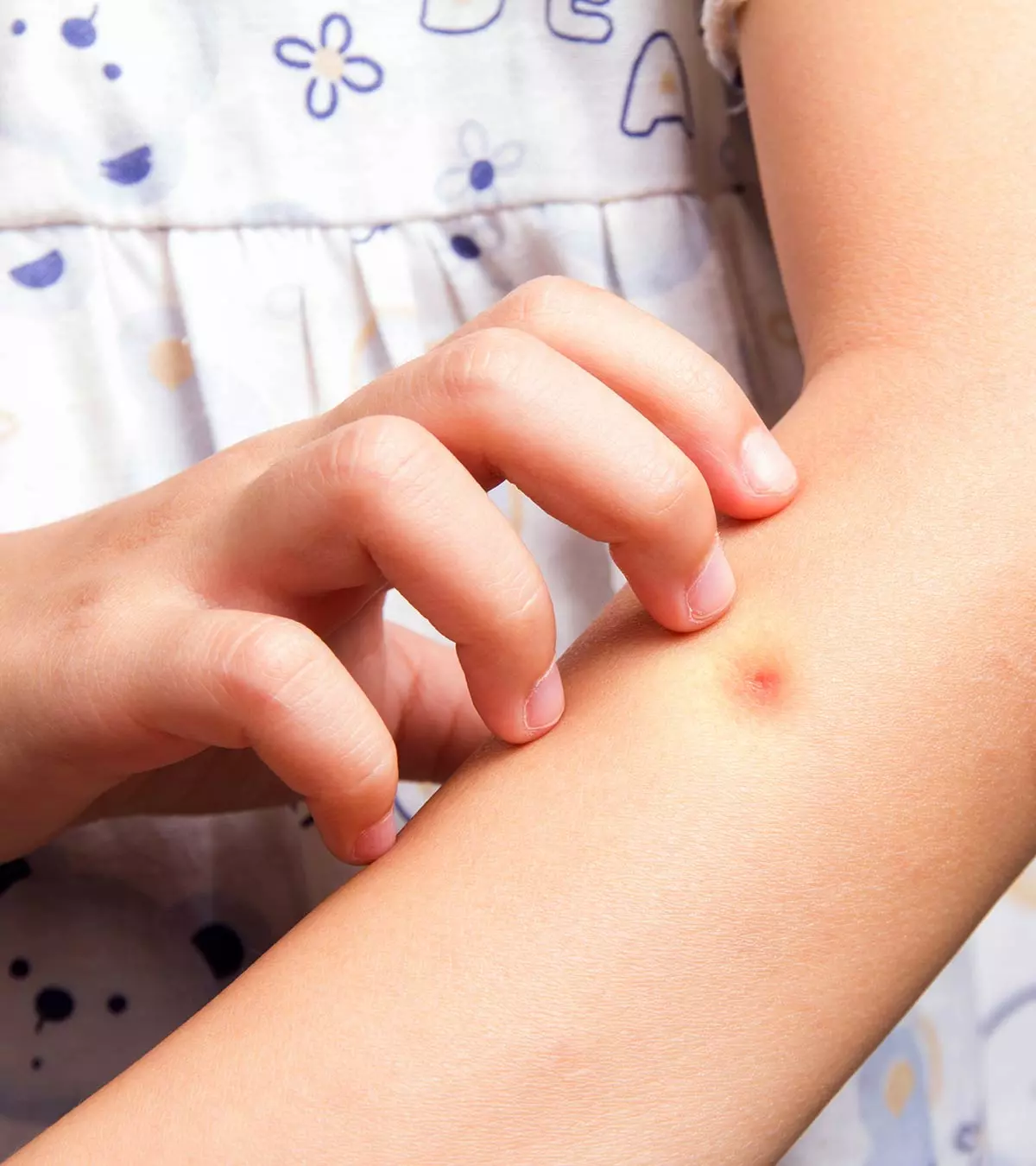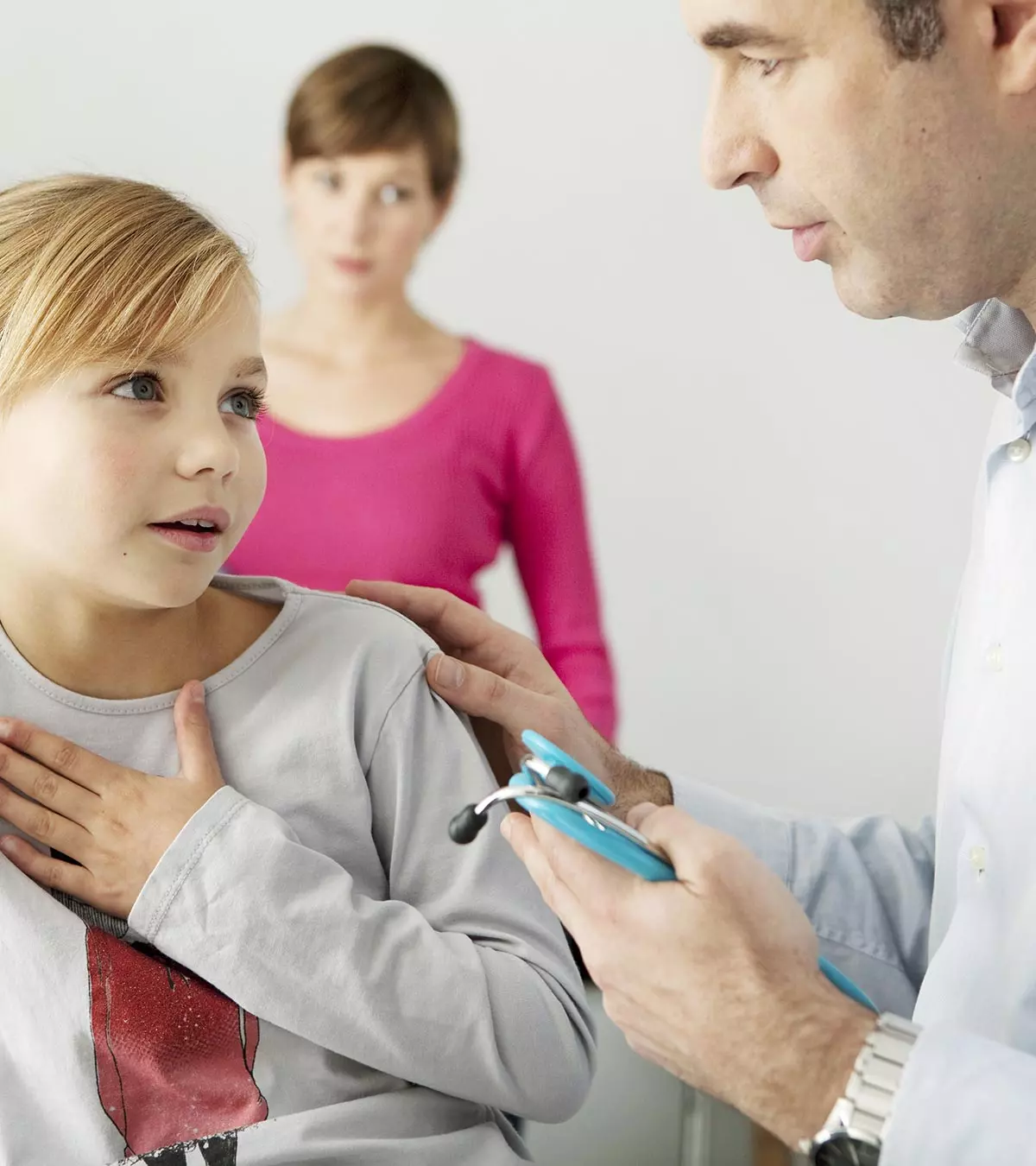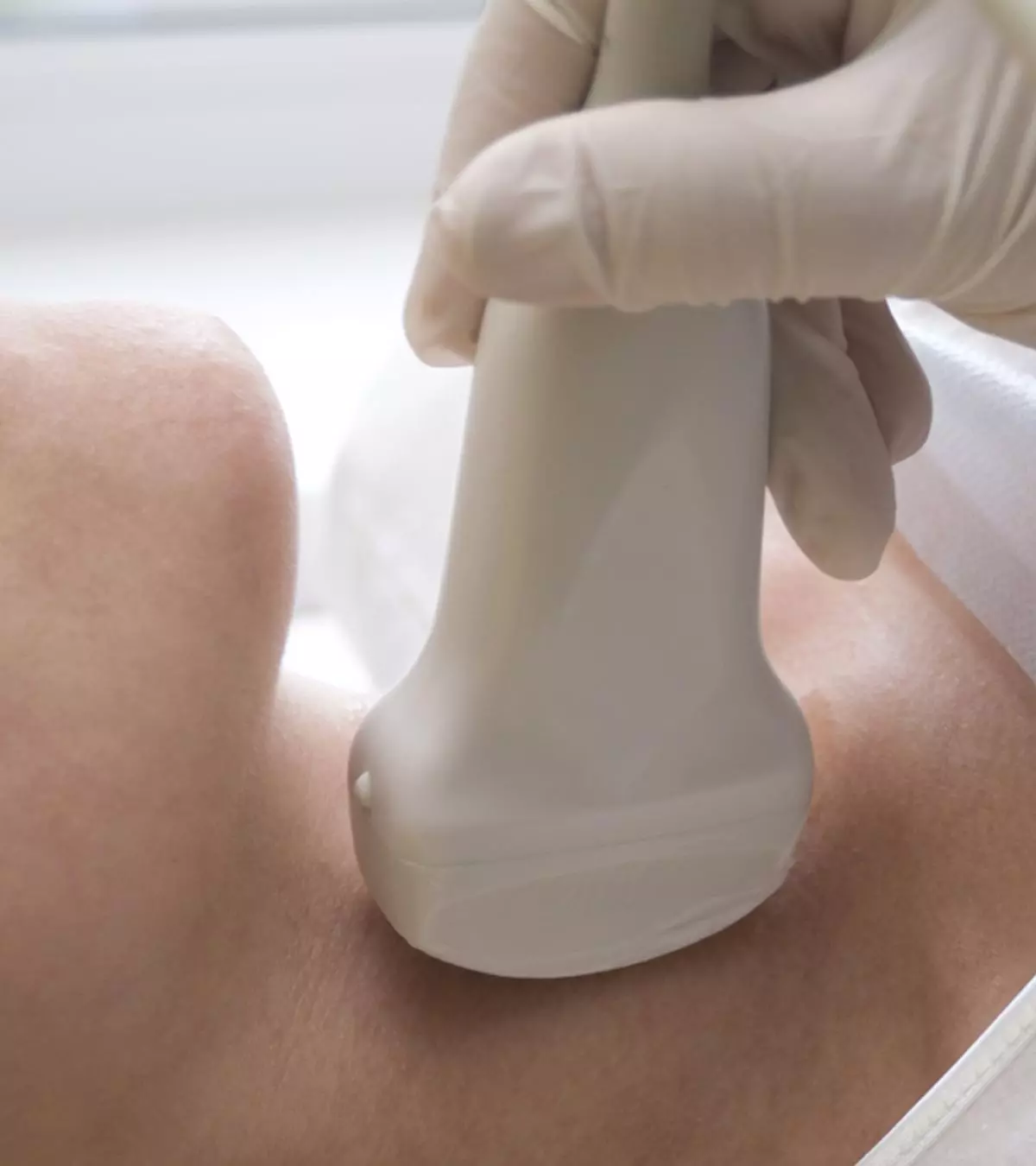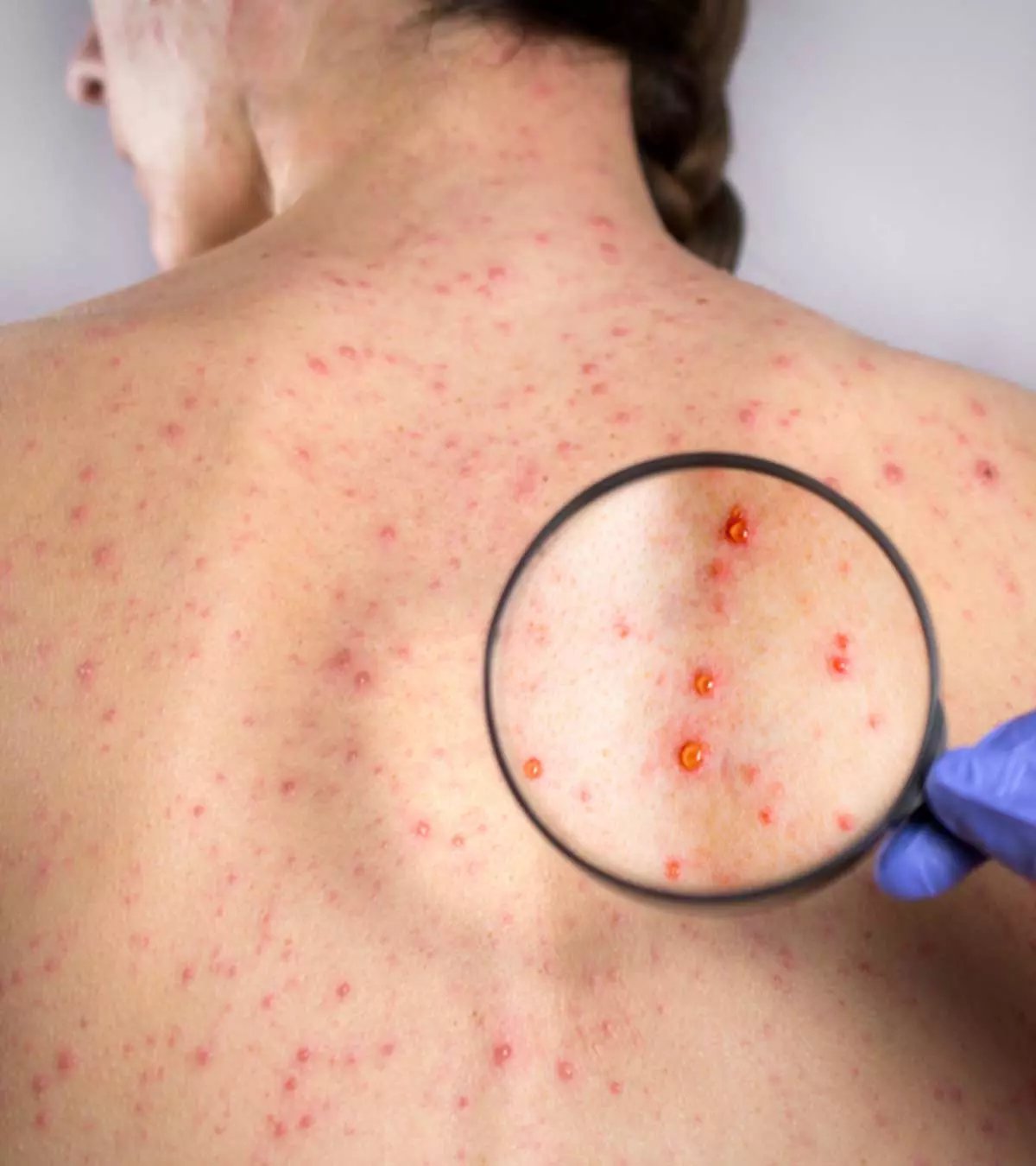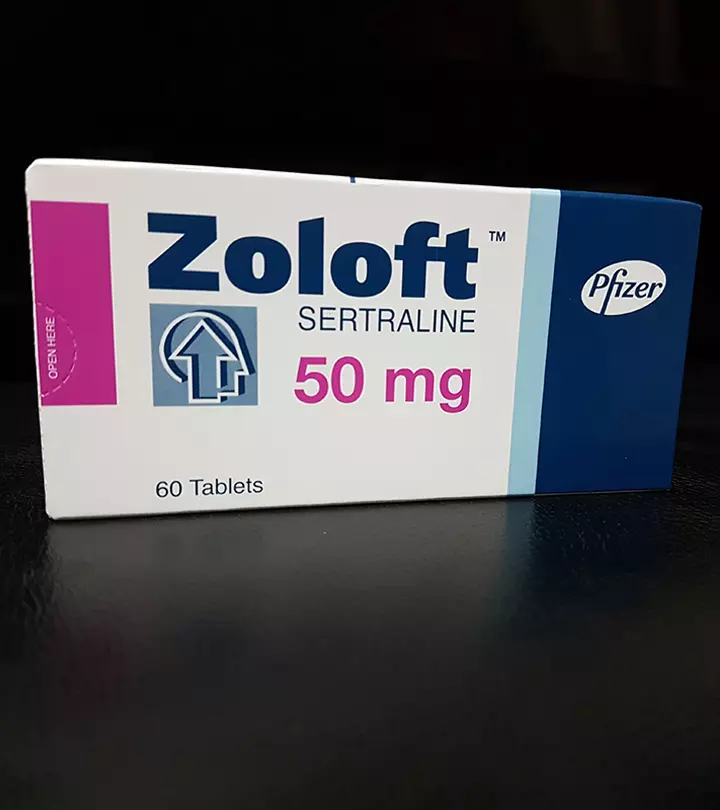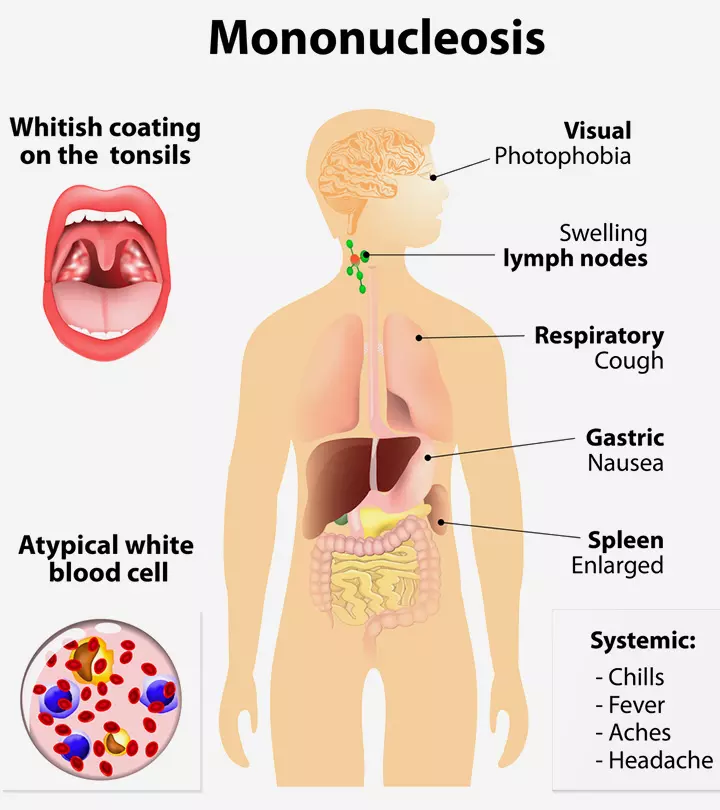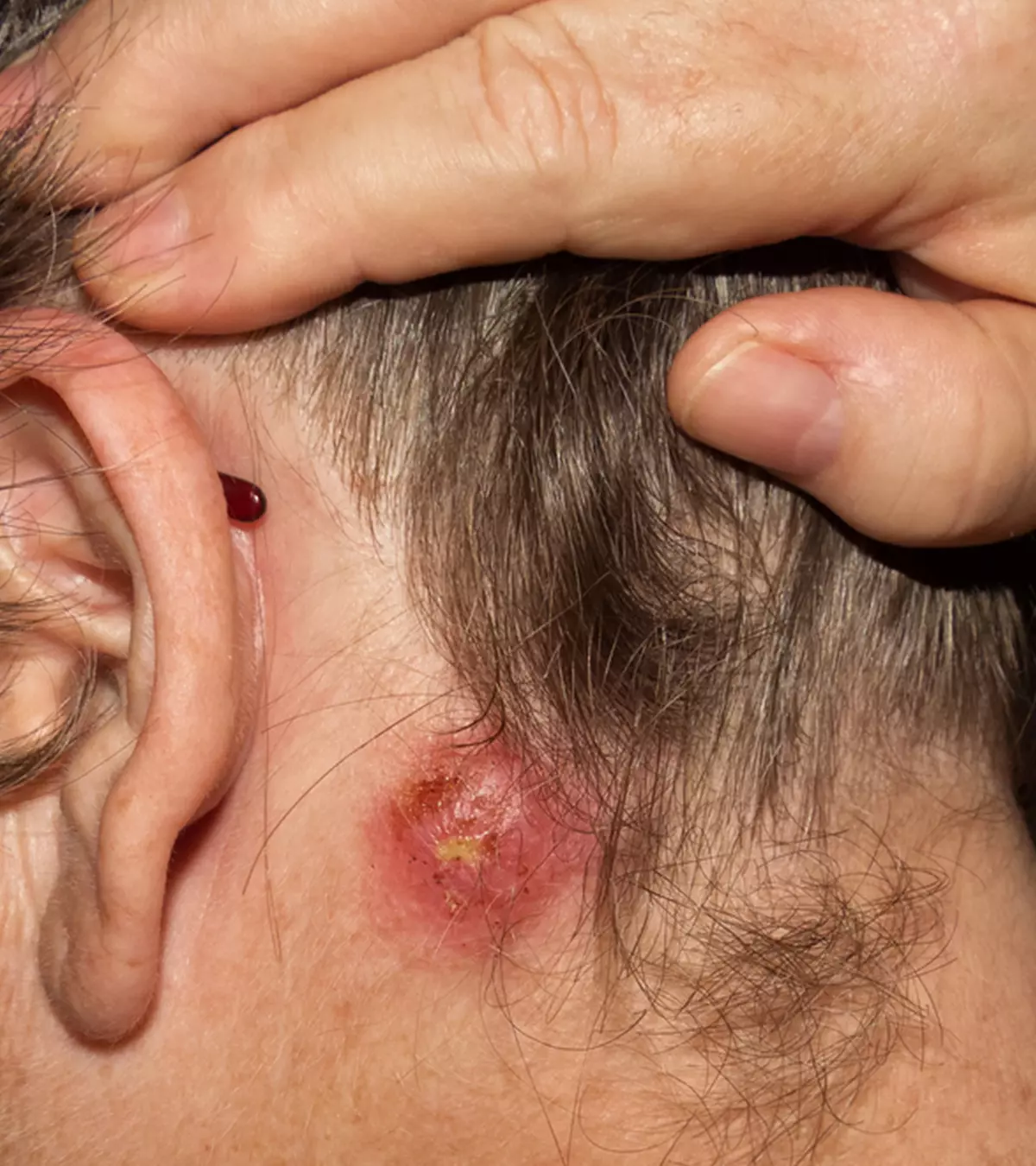
Image: ShutterStock
Staph infection in kids is caused by a group of bacteria called Staphylococcus. There are 40 different types of Staphylococci, where Staphylococcus aureus is the most common one infecting humans. Normally, these bacteria do not cause any illnesses or infections, but an infection may occur if they enter your child’s body through a cut, wound, or scratch. If not treated quickly, it may lead to severe health issues. Therefore, it is vital for parents to know the symptoms and management measures.

Keep reading this post to understand more about the causes, symptoms, treatment, and prevention of staph infection in kids.
Key Pointers
- Staph infection mainly leads to skin infection due to the Staphylococcus bacteria.
- These infections cause red, swollen bumps or fluid-filled blisters surrounding the wound.
- Fever, chills, vomiting, and other symptoms in your child might indicate an aggravation of staph infection.
- Depending on the severity of the infection, your child’s doctor might recommend topical, oral, or intravenous antibiotics.
- Proper and timely wound care and adequate precautions help prevent staph infections in children.
What Are The Causes Of A Staph Infection?
Staph infections are caused by the Staphylococcus bacteria that are found in the nose and on the skin of 30-50% of people, including children. In a normal, healthy child, these bacteria do not cause any harm (1). The most common site of their colonization is the anterior nasal vestibule, which is the lower end of the nostrils (2). Other sites of colonization include the skin, hair, and nails.
Staph infections occur when there is an open wound or breach in the skin and the bacteria living on the skin enter the body and trigger symptoms. The bacteria could cause various types of infection, depending on the tissue involved (3).
Forms Of Staph Infection
Below are the common forms of staph infection found in children (4).
- Skin infections are the most common type of infections caused by the Staphylococcus bacteria. It is also the initial infection, which may lead to other forms of infection if left untreated.
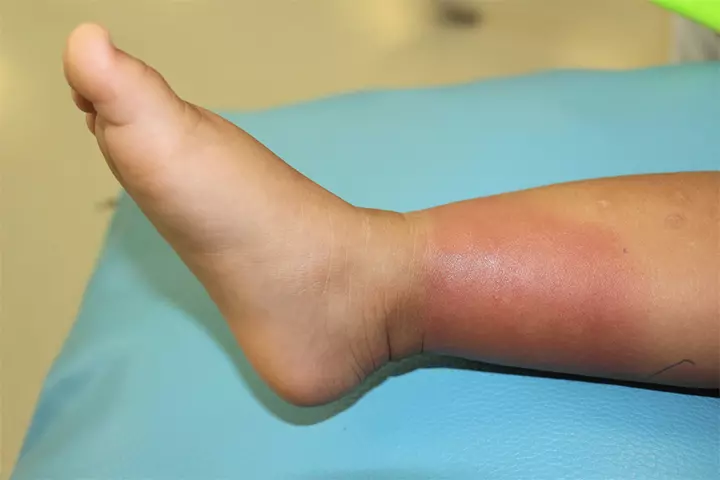
 Point to consider
Point to considerSigns And Symptoms Of Staph Infection
If your child has a wound or injury, this acts as a doorway for the Staphylococci to cause staph infection. It could lead to the following signs and symptoms (5).
- A red, swollen bump or boil around the wound
- A swollen bump under the skin that is hard on the touch
- Pain around the injury or the boil
- The skin around the wound becomes warm, and there is tenderness
- Formation of a fluid-filled blister in the area
- Impetigo or the formation of a superficial abscess in children, that leaks pus or yellow-colored fluid and forms a honey-colored crust
If the staph skin infection is not treated, it could spread to other parts of the body and lead to several systemic effects. Below are some of the common signs of exacerbated staph infection in children.
- Fever
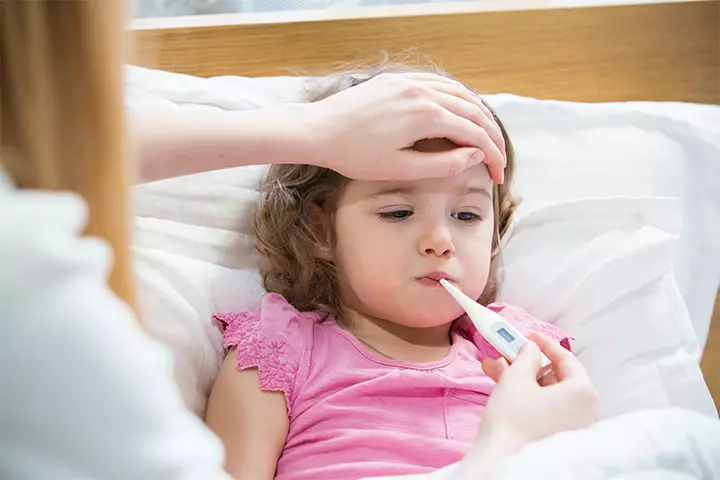
How Does A Staph Infection Spread?
Staph infections are contagious and can spread from one person to another when in close contact.
It commonly occurs in school-going children since they often come in close contact with other children.
Since Staphylococci can be found in many parts of the body, staph infections spread among children in the following ways (5).
- Touching someone with an active staph infection
- Inhaling respiratory droplets expelled by an infected person while coughing or sneezing
- Touching a surface that has the staph bacteria on it
- Touching a staph-infected wound with bare hands
- Eating food with unwashed hands that contain staph bacteria
- Eating food that has been contaminated by staph bacteria
Treatment For Staph Infection
If you suspect your child to have an infection around their wound, visit a pediatrician. The treatment plan for staph infection is often based on the location of the infection, the type of infection, and its severity.
Below are the common treatment modalities used to cure staph infections in children (1).
- If your child has a boil or furuncle around a wound, the doctor will lance and drain it. It will be followed by a prescription of topical antibiotics.
- If the skin infection is minor, no lancing will be needed. The doctor will prescribe topical antibiotics.
- If skin’s staph infection is severe or the bacteria have spread to other parts of the body, such as the gastrointestinal tract, the doctor could prescribe oral antibiotics. The child must complete the entire course of medication even if the symptoms are gone in a few days.
- Severe staph infections, such as endocarditis, pneumonia, or bacteremia, require hospitalization and administration of intravenous antibiotics.
The prognosis of the infection will depend on its type and severity. The doctor may prescribe other medications to reduce the symptoms and subdue any discomfort. Certain staph bacteria, such as methicillin-resistant Staphylococcus aureus (MRSA), are resistant to conventional antibiotics. The doctors may prescribe alternative antibiotics to treat MRSA infection in children.
 Did you know?
Did you know?How Long Is Staph Infection Contagious?
Most staph infections do not stay contagious 48 hours after receiving antibiotic treatment. However, the child may take time to get symptomatic relief. It is essential to complete the antibiotic course to ensure that the infection is completely eradicated and reduce the risk of antibiotic resistance. Sticking to the prescribed regimen is necessary even if the child begins to feel better. If there is no improvement within a reasonable timeframe or new symptoms appear, seeking medical guidance is vital for a thorough evaluation and proper management of the infection (6). It is essential to note that some people may carry Staphylococcus aureus bacteria on their skin or inside the nose without showing any symptoms. In such cases, they may carry the bacteria without being actively contagious.
Home Remedies For Staph Infection
There are no specific home remedies for staph infections. However, adequate wound care could reduce the spread of the bacterial infection and may even reduce its severity in some cases. Below are the steps to follow at home immediately after the child sustains an open wound (7).
- Wash the wound with clean running water. It will help remove any foreign material in the wound.

Once you have provided basic wound care at home, take your child to a doctor. Gaping wounds could require stitches, while bite wounds and burn wounds could require specialized care and preventive medication.
 Caution
CautionHow To Prevent Staph Infection In Children?
Staph infections in children can be prevented with timely wound care and adequate precautions. Below are some ways to prevent staph infections in children (8).
- Wash any wounds or rashes immediately after they occur. Apply an antiseptic ointment and cover it with a gauze bandage. If it is a bite or burn wound, consult a doctor soon.
- Personal hygiene for kids is essential for maintaining health and preventing the spread of germs. Teach your child good personal hygiene, such as washing hands with soap and water for 20 seconds before and after eating, and after coming from outdoors.


Frequently Asked Questions
1. Does staph bacteria stay in the body forever?
Staph bacteria are commonly found on the skin and the other parts of the body. However, they do not cause harm. It is only when the bacteria enters the body and finds the right conditions that it multiplies to infect parts of the body.
2. Is rubbing alcohol good for staph infections?
Yes, staph bacteria are killed by alcohol rubs and sanitizers (9). Carrying alcohol-based hand sanitizers is advisable if you don’t have access to water and soap. You may also use rubbing alcohol to clean reusable items, such as scissors or tweezers, after dressing a child’s wound.
3. Can my child go to school with a staph infection?
Children with staph infections can attend school unless a healthcare provider advises against it. However, they should avoid attending school if (10):
- There is a wound with pus that cannot be covered with a clean, dry bandage.
- They are unable to maintain good personal hygiene.
4. Can staph come back after antibiotics?
Yes, a staph infection may recur even after successful treatment with antibiotics. So it is essential to take proper preventive measures against it (11).
Staph infection in kids often occurs when the staphylococcus bacteria from the skin or nostrils enter the body through wounds or cuts or reach the lungs. Depending on the tissue involved, they can cause skin infection, pneumonia, endocarditis, and osteomyelitis. Staph can also reach the gastrointestinal tract through contaminated food or unwashed hands and lead to food poisoning. If not treated properly, local infections can cause bacteremia and sepsis. Signs and symptoms may vary from person to person, such as skin lesions, redness and swelling of the skin, fever, chills, and drowsiness. A complete course of antibiotics is prescribed for children with a staph infection.
Infographic: What Are The Risk Factors For Staph Infections In Children?
Staphylococcus aureus is a common bacteria residing on your skin and mucus membrane and does not necessarily cause an infection. However, certain factors, such as underlying health conditions, may increase children’s risk of illness. The following infographic lists notable conditions that increase children’s risk of staph infection.
Some thing wrong with infographic shortcode. please verify shortcode syntax
Illustration: Staph Infections In Kids: Symptoms Treatment & Home Remedies

Image: Stable Diffusion/MomJunction Design Team
Struggling with recurrent staph infections in your child? Get the answers you need to help your family in this video.
References
1. Staphylococcal Infections, The Royal Children’s Hospital Melbourne
2. Adèle Sakr et al., Staphylococcus aureus Nasal Colonization : An Update on Mechanisms, Epidemiology, Risk Factors, and Subsequent Infections, Frontiers in microbiology
3. What Every Parent Needs to Know: 5 Facts About Staph Infections, Riley Children’s Health Indiana University
4. Staphylococcal Infections, U.S. National Library of Medicine
5. E. Gregory Thompson, Adam Husney, and Elizabeth T. Russo, Staph Infection, C.S. Mott Children’s Hospital
6. Staph Infection, Cleveland Clinic
7. Basic Wound Care University of Wisconsin–Madison
8. Signs and Symptoms of Staph Infection, Ann & Robert H Lurie Children’s Hospital of Chicago
9. Methicillin-Resistant Staphylococcus Aureus What You Need to Know, California Department of Health Services
10. Schools and Daycares: MRSA Prevention and Response; CDC
11. C. Buddy Creech et al.; Prevention of Recurrent Staphylococcal Skin Infections; NCBI
Community Experiences
Join the conversation and become a part of our nurturing community! Share your stories, experiences, and insights to connect with fellow parents.
Read full bio of Dr. Richa A Kaushal
Read full bio of Dr Bisny T. Joseph
Read full bio of Dr. Ritika Shah
Read full bio of Vidya Tadapatri





